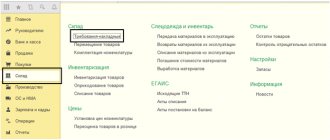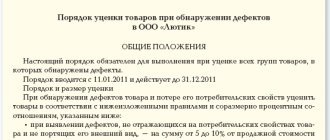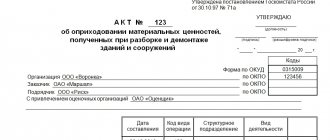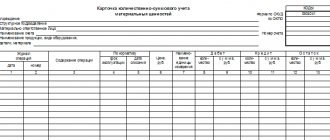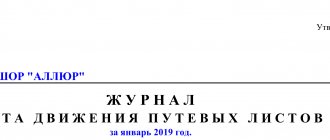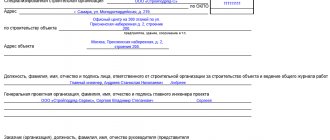In organizations that actively use warehouse resources, the need naturally arises to keep records of material assets. The latter arrive and leave the warehouse or other storage location. For such accounting, a special journal for recording inventory items deposited in the MX-2 form is very convenient.
- Form and sample
- Online viewing
- Free download
- Safely
FILES
This document systematizes information about the entire movement of goods. Reconciliation with it is able to resolve controversial issues during work regarding the receipt or cost of resources.
Terminology
The one who deposits something for safekeeping is called the depositor in the journal. Moreover, this can be either an individual person or an entire organization. In this case, different persons can place and accept material assets. The main thing is that they are employees of this organization and have the appropriate powers or powers of attorney. The person receiving and returning inventory items is most often the same – the storekeeper.
IMPORTANT! The journal provides for the possibility of interaction with another employee when returning.
Thus, different employees can carry out acceptance and return. If they have the right to do so, enter their data and sign for any operation, then it is being carried out legally. In any case, paperwork should only be maintained by a financially responsible person.
General provisions
The purpose of keeping records of material assets is to control the safety and rational operation of the enterprise’s property.
Information about property located in storage areas is entered into a special warehouse journal. Responsibilities for keeping records of valuables and filling out the document are assigned to the financially responsible person - the storekeeper, appointed by the director of the company. All material assets arriving at the warehouse are accepted for accounting, regardless of the method of their acquisition and the source of receipt.
Material assets arriving or leaving the enterprise are subject to capitalization and write-off according to the accounting book on the same day. The information contained in it must fully correspond to the actual availability of property in the organization.
Property accounting is carried out by the names of materials (products, equipment, etc.), their quantity, and types. To do this, fill out separate pages for each item.
The issuance of material assets to employees is carried out by the storekeeper against signature. The fact of its commission is recorded in the accounting book.
The company regularly checks the availability of material assets and the condition of accounting documents. Accounting data is verified against the contents of the warehouse journal. After reconciling the information obtained as a result of the audit, a special mark is placed in the appropriate section of the accounting book.
On the basis of what securities is it formed?
To correctly fill out the journal, you will need information from the act of acceptance and transfer of inventory items for storage in the MX-1 form. This primary document will confirm the accuracy of the data. Also, the journal will need an act on the return of inventory items deposited for storage (form MX-3).
The data obtained on the basis of these documents will be sufficient to fill out columns of the journal from the second to the eighth. The remaining items are filled in directly during reception and delivery, after reconciliation and recalculation of goods (if necessary).
Components
The journal is kept only in paper form, since financially responsible persons must sign it. The document includes:
- cover;
- even side;
- odd side.
The cover details the organization that handles the storage. In particular, it must contain its full name, OKPO form, type of activity according to OKDM, type of operations performed by it, address, fax and contact telephone number, and, if available, the structural unit in which the journal is opened.
A document for each individual division or warehouse is created individually.
The even-numbered side contains the name of the paper itself, a description of the period (from which date the journal was or was kept), position and signature with a transcript of the financially responsible person who keeps the journal.
A wide table in which the necessary information is entered is located on the odd side and can continue for a long time if necessary. If the magazine is printed on more than three sheets, then all subsequent even pages repeat the contents of the first even one, and all subsequent odd pages repeat the contents of the first odd one. The columns should contain the following information:
- the first is the serial number of recording;
- the second - when the actual transfer of property occurred, the date;
- third - the full name of the person who gives it for storage (if he does this on behalf of any company, then mention of it in this column is also mandatory);
- fourth - what type of property is being transferred, as well as the type of packaging (for example, Alenka candies in cardboard boxes);
- fifth - unit of measurement of goods (g, kg, tons);
- sixth - its quantity and mass (or only weight);
- seventh - cost;
- eighth - price;
- ninth – description of the storage premises, including address details and contact telephone number;
- tenth and eleventh - number and date of admission papers;
- then three columns make up a description of the acceptance for storage: what date this occurred, a signature with a transcript of the financially responsible person for this operation;
- columns fifteen to eighteen are responsible for the description of the return (the field for checking goods by quantity and quality is filled in), including the full name of the returner, his signature with a transcript, as well as the number and date of the return document;
- columns nineteen to twenty-one are created to indicate the full name, date and signature of the bailor after receipt, indicating that the goods and materials were received in full and he has no complaints about the storage process.
Some columns can be left blank if there is no data. You can also put dashes.
Book of accounting of the availability and movement of material assets of the Ministry of Emergency Situations of Russia
Appendix No. 8 (clause 95) to the order of the Ministry of Emergency Situations of Russia dated October 1, 2020 No. 737 “On approval of the Guidelines for organizing logistics of the Ministry of the Russian Federation for Civil Defense, Emergencies and Disaster Relief.”
Operational accounting of the presence and movement of equipment and property in territorial bodies (institutions) is carried out using books for recording the availability and movement of material assets, drawn up according to the recommended model (Appendix No. 8), as well as forms established by the structural unit of the central apparatus of the Ministry of Emergency Situations of Russia responsible for the relevant direction activities.
It is allowed to maintain operational records in electronic form, subject to compliance with information security and backup rules.
Explanations on the design of the book of accounting for the availability and movement of material assets
1. The book is intended to record the presence and movement of weapons, equipment, watercraft and other categorical and non-categorical material assets in structural units (services, departments, etc.) of a territorial body (institution).
In the structural units (services, departments, etc.) of the territorial body (institution), the required number of books are created for accounting - separately for recording equipment, separately for recording property (by type of property).
2. When preparing a book, depending on the number of expected entries, one or several pages are allocated for each name of material assets (in the sequence of their list according to the product classifier).
Each reporting unit, starting from column 20, is assigned one or more columns, of which one column is for the “Total” detail and the required number of columns for the “Of them by categories (grades)” detail.
If there are a large number of divisions in the book, additional sheets are allocated.
3. Initial entries of details - grounds in the book are made on the basis of primary accounting documents or data on material balances taken from the previous book. In the case of transferring balances from the previous book, write down: in column 2 - “Accounting book”, in column 3 - its number, in column 4 - the page of the book, in column 5 - “Transfer of balance”.
For non-category material assets, the details - grounds in columns 9 - 13 and 15 - 19 are not recorded.
4. When moving material assets within a territorial body (institution), entries in columns 6 and 7 are not made. In columns 8 - 13 the previous balances are repeated; changes in balances are made only in those departments that, according to accounting documents, are recipients (delivers) or suppliers.
5. When writing off equipment, the entry “Written off” is made in column 5, and in column 7 the quantity of equipment is indicated.
6. The inventory (reconciliation) note is recorded in the book as the next line. In this case, in column 1 the date of entry is indicated, in column 2 the entry “According to inventory” (“Reconciled”) is made, in column 3 the number and date of the inventory act (reconciliation) is indicated, and the columns with data are signed by the persons responsible for accounting in structural units (services, departments, etc.) of territorial bodies and institutions. The line with the annual inventory entry is underlined with a red line.
A note on reconciliation with a higher management body is recorded in the book as a regular line. In this case, in column 1 the date of reconciliation is indicated, in column 2 the entry “Reconciled” is made, and in columns 3 - 13 the position, rank, surname and initials of the official of the higher authority who carried out the reconciliation are indicated and certified by the signature of the specified official.
7. The book is registered in the established order, the pages in the book are numbered, on the back of the last sheet the entry “Total numbered ______ pages in the book” is made and certified by the signature of an official and the seal of the territorial body (institution).
Order of the Ministry of Emergency Situations of Russia dated October 1, 2020 No. 737 “On approval of the Guidelines for organizing logistics of the Ministry of the Russian Federation for Civil Defense, Emergencies and Disaster Relief”
Nuances of filling
The signature (with transcript) in the depositor's accounting journal when returning inventory items is, among other things, also a waiver of claims.
Before signing the document, the depositor is obliged to check what he takes away for compliance with quantity, quality, etc.
If there are any claims regarding these components (for example, he believes that some of the goods were damaged in some way during storage), then he has the right not to sign the last column of the journal. To resolve such issues, an act of acceptance of goods in terms of quantity and quality is drawn up. This is the only way to insure yourself during a possible trial.
Filling procedure
First, fill out the header of the document (or title page), in which the following data is entered:
- full name of the company;
- the name of the structural unit where the accounting journal is kept;
- position and full name of the financially responsible person keeping the book;
- the start date of maintaining the document (the date of its closure is indicated at the end of the accounting journal).
At the next stage, information about the item of material value is entered into the table. A separate sheet is drawn up for each name. The table includes seven columns:
- Code designation of the place of storage of material assets - the enterprise warehouse.
- Rack.
- Cell.
- Unit of measurement (this can be a piece, a pack, a package, etc., depending on the type of property).
- Price (per unit of stored item).
- Characteristics (sizes, grade, profile, brand).
- Inventory norm (represents the required amount of material assets available in the warehouse, allowing the enterprise to operate without interruptions).
Next, enter information in the line “Name of material”, for example, “calculator”, “sanding machine” or “printer paper”. The material code that was assigned to it by the accounting department is also indicated.
Then follows a table in which notes on the receipt and release of materials are entered. An entry in the accounting book is made by the responsible person for each fact of receipt or issue of a certain material value. The table is filled in in the following order:
- The first column contains the serial number of the record. Numbering starts from one. Accordingly, the first entry will be numbered “1”.
- The second column contains the date the entry was made. It must correspond to the actual receipt or disposal of material.
- The third column records the date and number of the document that is the basis for accepting material value (for example, a limit card when returning unused balances to the warehouse) or issuing it (for example, a statement for the issuance of material for the needs of the company).
- The fourth column should reflect the source of receipt of the material (for example, the supplier) or the division of the enterprise to which the value was issued and its financially responsible person.
- The option for filling out the fifth and sixth columns depends on the type of operation: reception (“Incoming” in the fifth column) or disposal (in the sixth column “Expense”).
- The seventh column contains the amount of material remaining in the warehouse at the end of the current operation.
- The final column is intended to indicate control. It includes the date of the inspection performed and the signature of the person who conducted it.

